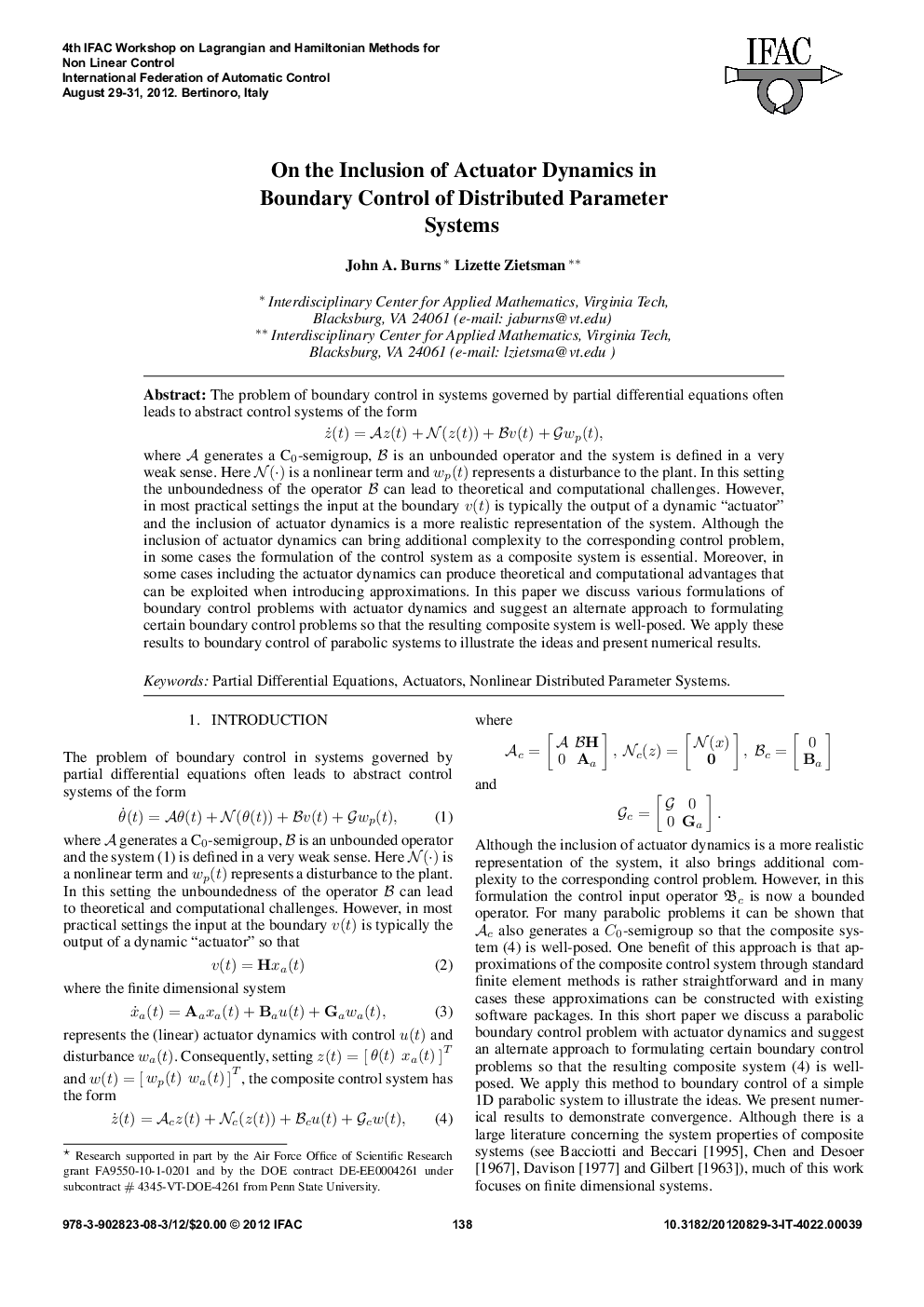| Article ID | Journal | Published Year | Pages | File Type |
|---|---|---|---|---|
| 718003 | IFAC Proceedings Volumes | 2012 | 5 Pages |
The problem of boundary control in systems governed by partial differential equations often leads to abstract control systems of the form where A generates a C0-semigroup, B is an unbounded operator and the system is defined in a very weak sense. Here N(·) is a nonlinear term and wp(t) represents a disturbance to the plant. In this setting the unboundedness of the operator B can lead to theoretical and computational challenges. However, in most practical settings the input at the boundary v(t) is typically the output of a dynamic “actuator” and the inclusion of actuator dynamics is a more realistic representation of the system. Although the inclusion of actuator dynamics can bring additional complexity to the corresponding control problem, in some cases the formulation of the control system as a composite system is essential. Moreover, in some cases including the actuator dynamics can produce theoretical and computational advantages that can be exploited when introducing approximations. In this paper we discuss various formulations of boundary control problems with actuator dynamics and suggest an alternate approach to formulating certain boundary control problems so that the resulting composite system is well-posed. We apply these results to boundary control of parabolic systems to illustrate the ideas and present numerical results.
